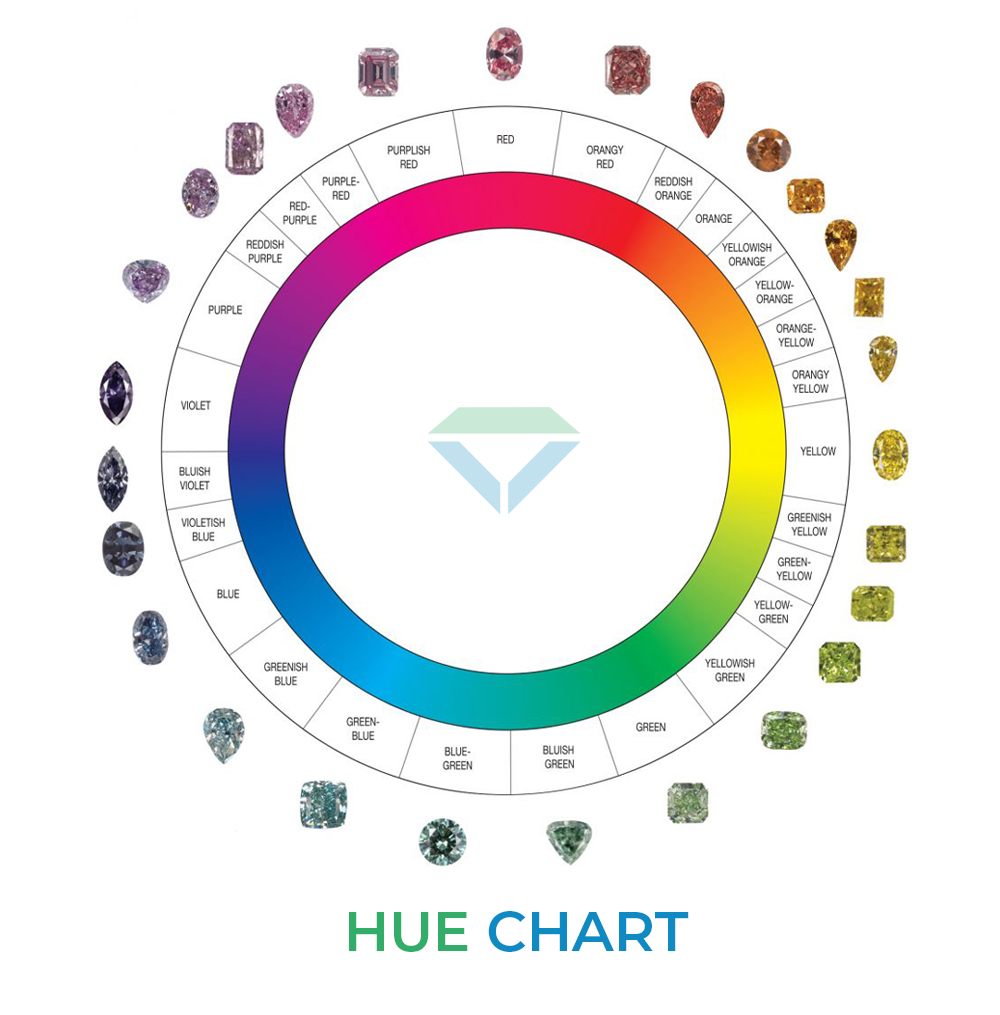Lab Grown Colored Diamonds: Fancy Color Diamond Guide & Chart
When people hear the word “color,” they imagine sparkling, colorful diamonds like red, pink, yellow, and blue. However, in lab-grown color diamonds, there are endless color variations available for each shade. In this guide, let’s examine how you should choose yours.
Lab Grown Colored Diamonds: A New Era in Jewelry
Colored lab-created diamonds can be made in an array of rare colors. This color occurs in the diamond due to changes in the gas mixture added to the CVD reactor during growth. These gases include methane, nitrogen, oxygen, etc. This process may sound simple, but our researchers take thousands of hours to improve it and create a perfect piece of diamond for you to set in your jewelry.
This process makes high-quality colored lab diamonds with various shapes, cuts, clarity, etc. All these features are available in the best quality diamonds. Suppose you are searching for a unique lab diamond engagement ring, wedding band, anniversary gift, etc. These colored diamonds are so popular among many people nowadays, and the reason behind this is that they may prefer a specific color because it looks more attractive, and some people just like the idea of having unique colored diamonds, depending on their personality.
What are Fancy Color Diamonds?

Fancy colored diamonds are known for their vibrant and captivating hues. Unlike the more common white diamonds, which are prized for their transparency and colorless look, fancy color diamonds exhibit a wide range of striking colors, including shades of blue, pink, yellow, green, and red, and even rare colors like purple and orange.
These lab diamonds get their hues during the process of formation. Their value and luxurious look make them highly sought after. The grading of Lab grown fancy color diamonds undergoes the same processes as natural ones and is graded based on hue, tone, and saturation.
Certainly! Let’s dig into each of these topics: hue, tone, and saturation.
How are Colored Lab Created Diamonds Made?
Colored diamonds can be made naturally or through treatments. Lab grown colored diamonds are created using advanced technology, including the HPHT process and CVD process that replicates the natural diamond-growing process.
Through the lab diamond process, colorless diamonds are infused with trace elements to achieve specific colors. Lab grown colored diamonds offer a sustainable and affordable alternative to natural ones, with virtually indistinguishable properties.
lab grown diamonds color chart: Hue

In the realm of fancy color diamonds, “hue” refers to the dominant color visible within the diamond. It’s what we commonly associate with terms like “blue diamond” or “pink diamond.” diamonds can exhibit a wide spectrum of hues, ranging from cool blues and greens to warm yellows, pinks, and even rare shades like purples and oranges. The presence of certain impurities or structural anomalies during a diamond’s formation (Growing and Treatment) contributes to its unique hue.
Tone


Tone refers to the lightness or darkness of a diamond’s color. It’s a critical aspect in evaluating the overall appearance of a fancy color diamond. The tone scale ranges from Fancy Light, Fancy, Fancy Intense, Fancy Vivid, and Fancy Deep.
The tone scale provides a nuanced framework for assessing the richness and depth of color within fancy color diamonds. A Fancy Light tone exhibits a delicate, subtle coloration, while Fancy strikes a balance between vividness and sophistication. Stepping up, Fancy Intense showcases a more pronounced and vibrant hue, commanding attention with its radiant presence.
Moving towards the upper echelons of the scale, Fancy Vivid presents an intense and electrifying coloration, often sought after for its mesmerizing allure. Finally, at the pinnacle, Fancy Deep exudes a profound, saturated color, creating a dramatic and opulent visual impact.
Saturation

Saturation, also referred to as intensity or vividness, pertains to the strength or purity of a diamond’s color. It measures how much the hue stands out, and it is an integral component in determining a fancy color diamond’s overall visual impact. Saturation is evaluated on a scale that ranges from faint to intense, with higher levels of saturation indicating a more vibrant and pronounced coloration.
A diamond with high saturation appears more vivid and captivating, commanding attention with its rich and deeply saturated hue. In contrast, a diamond with lower saturation may exhibit a more subtle or pastel color, which can have its unique appeal, particularly for those seeking a softer, understated aesthetic.
